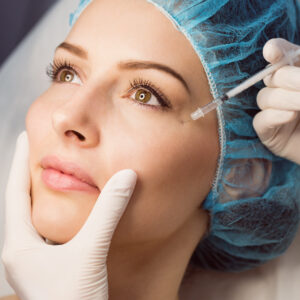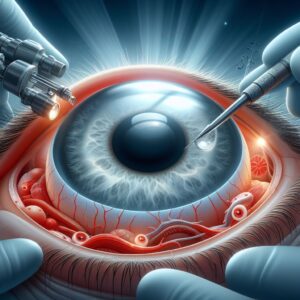Description
Familiarity with treatment
Ear reshaping, also known as otoplasty, is a surgical procedure performed to alter the shape, position, or size of the ears. The goal of otoplasty can be to correct structural abnormalities, improve appearance, or address ear damage caused by trauma. Here is a general overview of the procedure based on the search results:
Consultation: The first step in the ear reshaping process is to schedule a consultation with a qualified plastic surgeon. During this consultation, you will discuss your concerns, goals, and expectations for the procedure. The surgeon will evaluate your ears, assess your eligibility for otoplasty, and explain the surgical technique that will be used.
Anesthesia: Otoplasty can be performed under local anesthesia with sedation or general anesthesia, depending on the extent of the surgery and the patient’s preference. Local anesthesia numbs the ear and surrounding area, while general anesthesia keeps the patient asleep throughout the procedure.
Incisions: The surgeon typically makes incisions behind the ear, where they can be hidden within the natural creases. The specific incision pattern may vary depending on the individual case and the desired outcome.
Reshaping and Repositioning: The surgeon will reshape the cartilage of the ear to achieve the desired appearance. This may involve techniques such as scoring, folding, or removing excess cartilage. If necessary, the surgeon may also reposition the ear closer to the head to address protrusion.
Suturing: Once the reshaping is complete, the surgeon will use sutures to secure the newly shaped cartilage in place. These sutures may be dissolvable or require removal during a follow-up appointment.
Recovery and Follow-up: After the procedure, the surgeon will provide specific postoperative care instructions. This may include wearing a protective dressing or bandage over the ears, avoiding certain activities that could strain the ears, and taking prescribed medications for pain management. Follow-up appointments will be scheduled to monitor the healing progress and remove any sutures if necessary.
Who is it suitable for?
Ear reshaping, or otoplasty, is suitable for individuals who have concerns about the shape, position, or size of their ears. Here are some factors mentioned in the search results that may make someone a good candidate for ear reshaping:
Protruding Ears: Otoplasty can be performed to “pin back” ears that stick out prominently from the sides of the head. This is a common reason for children and young teenagers to undergo ear reshaping surgery.
Large or Small Ears: Otoplasty can address ears that are larger or smaller than average. Some individuals may feel self-conscious about the size of their ears and seek otoplasty to achieve a more proportionate appearance.
Deformities: Otoplasty can correct various ear deformities, such as “lop ear” (where the tips fold down and forward) or “shell ear” (where the natural folds and creases are missing). It can also address issues like large or stretched earlobes, or earlobes with significant creases and wrinkles.
Congenital Abnormalities: Otoplasty is often performed on individuals who were born with structural ear abnormalities. These congenital conditions may include protruding ears, misshapen ears, or other ear irregularities.
Traumatic Injuries: Otoplasty can also be performed on individuals who have sustained ear injuries or trauma, such as those resulting from car accidents, dog bites, or sports-related incidents.
Who is it not suitable for?
Based on the search results, there are no specific indications mentioned for individuals who are not suitable for ear reshaping surgery (otoplasty). However, it is important to consider the following factors:
Age: Otoplasty is commonly performed on children between the ages of 4 and 14, as the ears reach their full growth by the age of 4. However, adults can also undergo otoplasty if they have concerns about the appearance of their ears.
Health Conditions: Individuals with certain medical conditions or health issues may not be suitable candidates for otoplasty. It is important to discuss your medical history with a qualified plastic surgeon to determine if you are a suitable candidate for the procedure.
Expectations: It is important to have realistic expectations about the outcomes of otoplasty. While the procedure can improve the appearance of the ears, it is important to understand that it may not achieve “perfect” or “ideal” ears. Consulting with a plastic surgeon can help manage expectations and determine if otoplasty is the right choice for you.
Psychological Readiness: Otoplasty is an elective cosmetic procedure, and it is important for individuals to be psychologically prepared for the surgery and the potential changes in their appearance. It is advisable to have a thorough discussion with the surgeon to ensure that you are mentally prepared for the procedure.
Advantages
Ear reshaping, or otoplasty, offers several advantages for individuals who are unhappy with the appearance of their ears. Here are some advantages mentioned in the search results:
Improved Appearance: Otoplasty can correct various ear abnormalities, such as protruding ears, overly large ears, misshapen ears, or deformities like “lop ear” or “shell ear.” The surgery aims to provide a more natural and symmetrical appearance to the ears, enhancing facial harmony and boosting self-confidence 1 2.
Permanent Solution: Otoplasty offers a permanent solution to address ear concerns. Once the reshaping is done and the ears have healed, the results are typically long-lasting.
Correction of Traumatic Injuries: Otoplasty can also be performed to correct ear damage caused by trauma, such as car accidents, dog bites, or sports-related injuries. It can help restore the shape and structure of the ears, improving both appearance and function 1.
Psychological Benefits: Otoplasty can have significant psychological benefits, especially for individuals who have been teased or bullied due to the appearance of their ears. By improving the aesthetics of the ears, otoplasty can boost self-esteem and improve overall well-being 3.
Customized Treatment: Otoplasty is a customizable procedure that can be tailored to the individual’s specific needs and goals. The surgeon will work closely with the patient to understand their concerns and desired outcomes, creating a treatment plan that addresses their unique ear characteristics.
Complications
Like any surgical procedure, ear reshaping (otoplasty) carries potential risks and complications. Here are some complications that may occur, as mentioned in the search results:
Bleeding: While rare, bleeding can occur during or after the surgery. It is important to follow postoperative instructions to minimize the risk of bleeding.
Infection: Infection is a potential complication of any surgical procedure, including otoplasty. It can usually be treated with antibiotics, but in severe cases, additional surgery may be required.
Blood Clot: In rare instances, a blood clot may develop in the ear. This can dissolve naturally or be removed with a needle.
Scarring: Otoplasty incisions are typically made behind the ear, in the natural creases, to minimize visible scarring. However, there is still a possibility of scarring, although it is usually minimal and well-hidden.
Asymmetry: Achieving perfect symmetry is challenging, and there is a risk of slight asymmetry in the appearance of the ears after otoplasty.
Numbness or Sensitivity: Temporary or permanent changes in sensation, such as numbness or increased sensitivity, may occur in the ears after otoplasty.
Poor Wound Healing: In some cases, the incisions may heal poorly, leading to delayed wound healing or unsatisfactory scarring.
preoperative care
Based on the search results, here are some preoperative care instructions for ear reshaping (otoplasty):
Consultation: Schedule a consultation with a qualified plastic surgeon to discuss your concerns, goals, and expectations for the procedure. During this consultation, the surgeon will evaluate your ears, assess your eligibility for otoplasty, and explain the surgical technique that will be used 1.
Medical Evaluation: Your surgeon may require you to undergo a medical evaluation before the surgery. This may include laboratory tests and an electrocardiogram (EKG) for patients who are 40 years old and older 2.
Preoperative Instructions: Follow the preoperative instructions provided by your surgeon. These instructions may include guidelines on eating and drinking before the surgery, as well as any necessary medication adjustments.
Smoking and Medications: If you smoke, it is advisable to quit smoking before the surgery, as smoking can impair the healing process. Inform your surgeon about any medications or supplements you are taking, as some may need to be temporarily discontinued before the surgery 1.
Arrangements: Make necessary arrangements for transportation to and from the surgical facility, as well as for someone to stay with you during the initial recovery period.
Preparation at the Facility: On the day of the surgery, arrive at the facility on time and follow any specific instructions provided by the surgical team. This may include completing preoperative paperwork and receiving medication from an anesthesiologist or surgeon 1.
Postoperative care
After undergoing ear reshaping surgery (otoplasty), it is important to follow proper postoperative care instructions for optimal healing and recovery. Here are some general postoperative care guidelines mentioned in the search results:
Dressing and Incision Care: Your surgeon will provide specific instructions regarding the care of the dressing or bandages applied after the surgery. It is important to keep the dressing dry and clean as directed. Avoid touching or manipulating the incision site to prevent infection.
Pain Management: Some discomfort or pain is expected after otoplasty. Your surgeon may prescribe pain medication to help manage any postoperative pain. Follow the prescribed dosage and instructions provided by your surgeon.
Activity Restrictions: It is important to avoid strenuous activities, heavy lifting, or activities that may put pressure on the ears during the initial recovery period. Your surgeon will provide specific guidelines on when you can resume normal activities.
Hair Care: Take care when shampooing or styling your hair to avoid bending or hitting the ears. Be gentle when brushing or styling your hair to prevent any trauma to the surgical site.
Avoiding Pressure on the Ears: If you wear glasses, your surgeon may advise taping them up so they do not rest on the incision site. Be cautious to avoid any pressure or trauma to the ears during the healing process.
Follow-up Appointments: Attend all scheduled follow-up appointments with your surgeon to monitor your healing progress and address any concerns or questions you may have.






Reviews
There are no reviews yet.